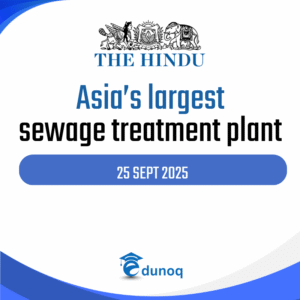GLP-1 Drugs on WHO Essential Medicines List: A Game Changer for Diabetes and Obesity Care
Diabetes is one of the fastest-growing health challenges of our time. Along with obesity, heart disease, and kidney damage, it has created a public health emergency. India, with its massive population of diabetic patients, urgently needs solutions that are both effective and affordable. In this context, the World Health Organization’s (WHO) inclusion of diabetes drug GLP-1 medicines in its Essential Medicines List (EML) is a historic step forward.
What is the WHO Essential Medicines List?
The EML identifies drugs that are essential for meeting key health needs. Inclusion of a medicine like diabetes drug GLP-1 means governments should make efforts to provide it at affordable prices and ensure universal access. For patients, this translates into better availability and affordability of advanced medicines like diabetes drug GLP-1 across public health systems.
What is Diabetes Drug GLP-1?
Diabetes drug GLP-1 refers to a class of medicines called GLP-1 receptor agonists. These drugs mimic a natural hormone that helps control blood sugar, reduce appetite, and aid in weight loss. Popular versions of diabetes drug GLP-1 include semaglutide, liraglutide, dulaglutide, and tirzepatide.
Unlike older drugs, diabetes drug GLP-1 not only controls sugar but also reduces cardiovascular risk and helps obese patients achieve meaningful weight loss. This dual benefit has made diabetes drug GLP-1 one of the most talked-about innovations in modern medicine.
Why the WHO Decision Matters
The WHO move signals that diabetes drug GLP-1 is no longer a luxury but a necessity. With over 500 million people worldwide suffering from diabetes, access to diabetes drug GLP-1 could transform global health. These medicines reduce hospitalizations, prevent heart attacks, and improve long-term outcomes. By putting diabetes drug GLP-1 on its EML, WHO is urging countries to negotiate prices and ensure broader distribution.
Cost Barriers and Challenges
Currently, the biggest barrier to diabetes drug GLP-1 is its high price. In countries like the US, monthly treatment costs thousands of dollars. In India too, diabetes drug GLP-1 remains expensive for the average patient. WHO’s recognition should help governments push for generics, subsidies, and public insurance coverage to make diabetes drug GLP-1 accessible.
India’s Situation
India has more than 100 million people with diabetes. Obesity and lifestyle diseases are rising rapidly. For such a large population, diabetes drug GLP-1 can be a game changer. If added to India’s National Essential Medicines List, diabetes drug GLP-1 could be made available at government hospitals and covered under health insurance schemes. This would help millions of patients who currently cannot afford diabetes drug GLP-1 treatment.
Doctors’ Opinions
Experts across India welcome this move. They emphasize that while diabetes drug GLP-1 is effective, affordability remains the key issue. Physicians caution against misuse of diabetes drug GLP-1 as a quick weight-loss tool by healthy individuals, urging that it should be reserved primarily for diabetic and high-risk patients.
Global Health Impact
Wider access to diabetes drug GLP-1 will not only help individual patients but also reduce the burden on healthcare systems worldwide. Treating complications of uncontrolled diabetes is costly. By ensuring more patients have access to diabetes drug GLP-1, governments can save billions in long-term healthcare costs.
Ethical Concerns
Another issue is misuse. Diabetes drug GLP-1 has gained popularity among celebrities as a “slimming injection.” This has created supply shortages, making it harder for genuine diabetic patients to access diabetes drug GLP-1. WHO’s decision will help shift focus back to patient needs rather than lifestyle fads.
The Way Forward for India
To make diabetes drug GLP-1 truly accessible, India must:
Add it to the National Essential Medicines List.
Encourage local pharmaceutical companies to develop affordable versions of diabetes drug GLP-1.
Negotiate with multinational firms to lower costs.
Include diabetes drug GLP-1 in Ayushman Bharat and other government schemes.
Diabetes medicine GLP1 is now considered a breakthrough therapy for type 2 diabetes and obesity.
The WHO’s decision to include diabetes medicine GLP1 in the essential list highlights its importance.
Patients worldwide are demanding better access to diabetes medicine GLP1 because of its dual role in lowering sugar and reducing weight.
In India, diabetes medicine GLP1 can change the way we manage chronic metabolic disorders.
Doctors believe that diabetes medicine GLP1 offers significant protection against heart disease.
Obese patients with uncontrolled sugar levels may particularly benefit from diabetes medicine GLP1.
The biggest challenge with diabetes medicine GLP1 is affordability in low-income countries.
Many clinical studies confirm that diabetes medicine GLP1 reduces long-term complications.
Governments are encouraged to negotiate lower prices for diabetes medicine GLP1.
The addition of diabetes medicine GLP1 to WHO’s essential medicines list is historic.
For India, wider access to diabetes medicine GLP1 could save millions of lives.
Global demand for diabetes medicine GLP1 has increased dramatically in the last five years.
Lifestyle changes along with diabetes medicine GLP1 can improve patient outcomes.
Pharmaceutical companies are working on generic versions of diabetes medicine GLP1.
The popularity of diabetes medicine GLP1 has grown even among non-diabetic patients seeking weight loss.
Experts caution that diabetes medicine GLP1 should be prescribed only under medical supervision.
Clinical guidelines now recommend diabetes medicine GLP1 for high-risk diabetic patients.
With strong government support, diabetes medicine GLP1 can become affordable for all.
WHO’s endorsement means diabetes medicine GLP1 is no longer seen as a luxury drug.
The future of diabetes care may revolve around wider access to diabetes medicine GLP1.



